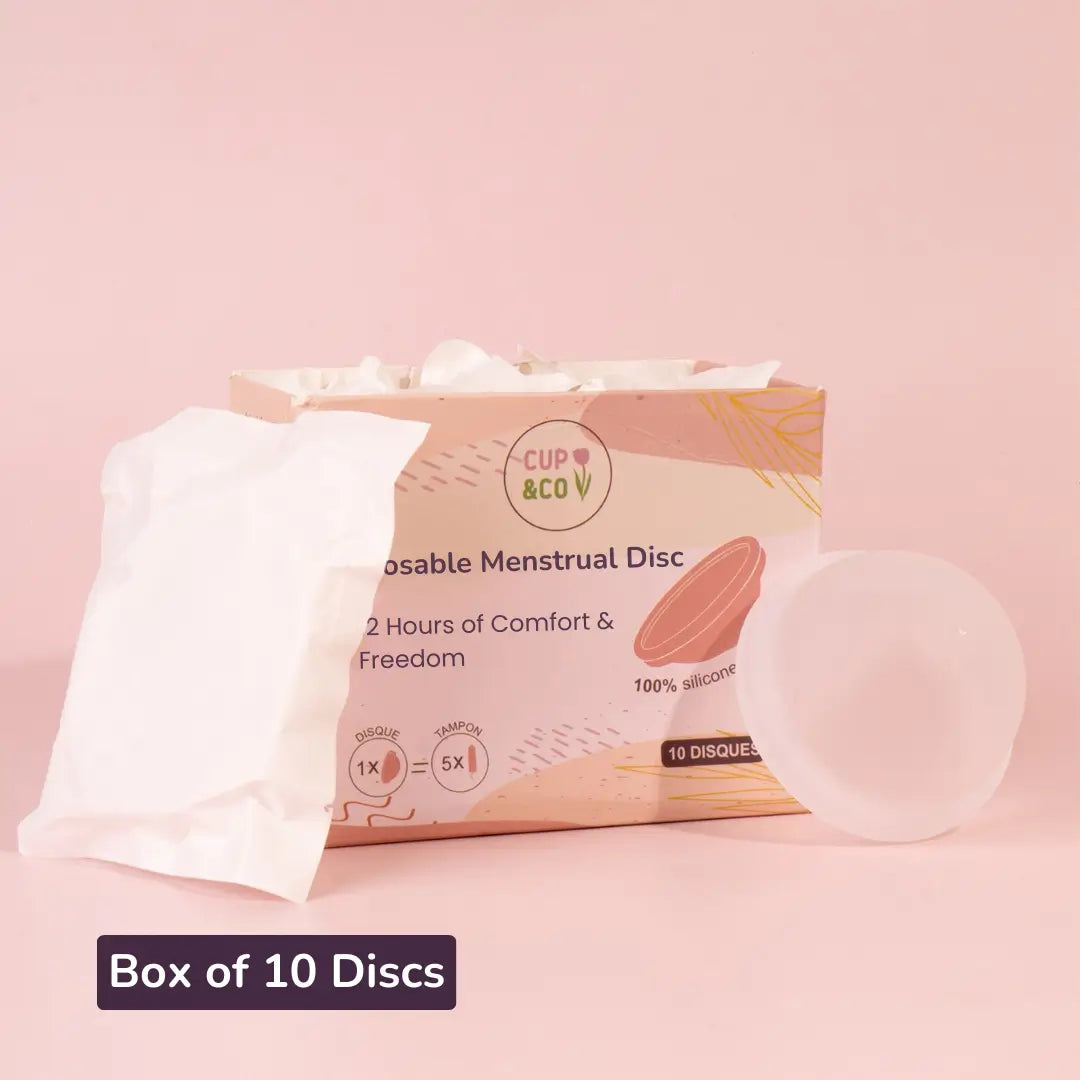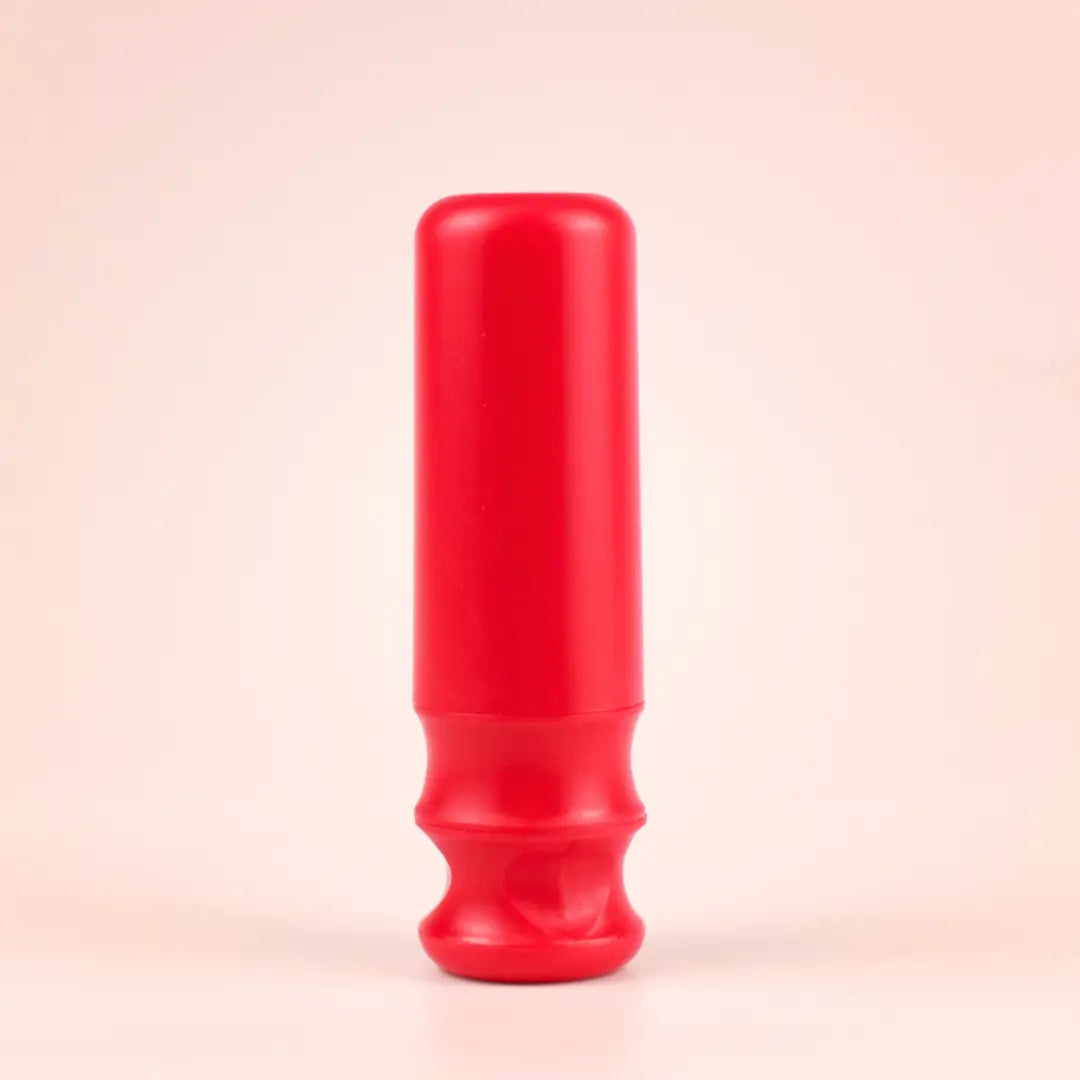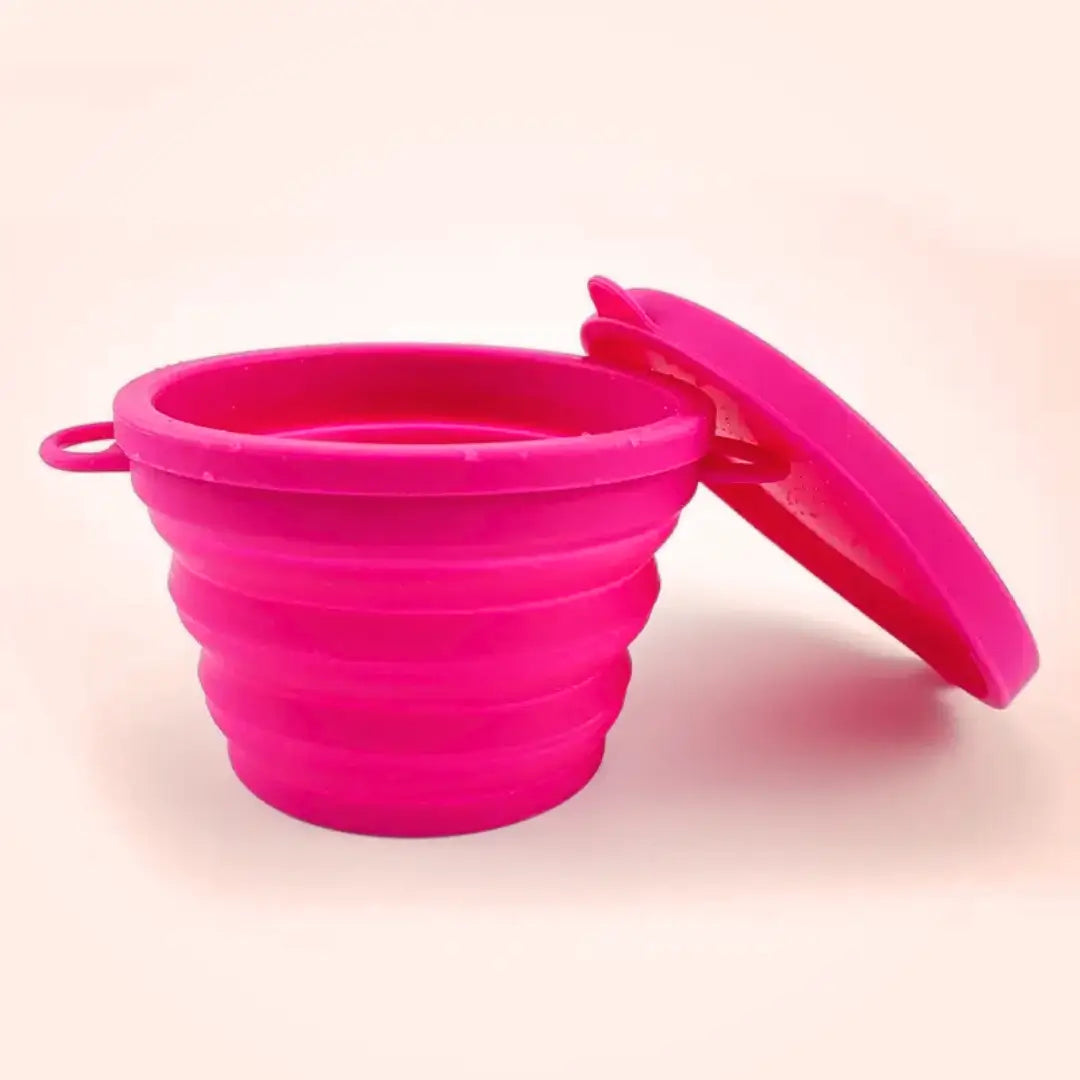Your menstrual cup shouldn't be leaking.
So if it does, that's usually a sign that something isn't quite right. 😕
Leaks can happen during your first few tries with a cup or if your body has changed like after giving birth, or due to other shifts in your anatomy or also when you sleep.
If you've tried the tips we'll go over in this article and your cup is still leaking, it might be time to stop using it and look for a more suitable alternative.
Cup&Co Menstrual discs are one of the best swaps for cups and many women switch after dealing with cup-related issues.
Your Menstrual Cup Isn't Fully Opening?

Causes:
One of the most common reasons for cup leaks, according to tons of user reviews, is improper cup deployment during insertion. 🩸
When the rim (upper edge) of your menstrual cup doesn't fully open and seal against your vaginal walls, it creates a small gap. This allows your period blood to bypass the cup, leading to leaks in your underwear.
Solutions to help your cup open properly:
-
Try inserting your cup in a squatting position (either in the shower or over the toilet) or with one leg raised. This helps angle the cup more naturally toward your back (toward the rectum), which makes insertion smoother.
- Use the Pushdown Fold: This folding technique makes your cup more compact and easier to insert. (Check the image below for reference.)

- Twist the cup after insertion by holding the stem. A gentle spin can help it pop open completely. (Image below.)

- Use your finger to press on your vaginal wall to make more space and help the cup expand properly.
To double-check if your cup is fully open, insert your finger and feel around the rim of the cup. If it's sealed against your vaginal walls, you're good to go.
Need more guidance? Check out our full step-by-step guide on how to insert your menstrual cup correctly.
Your Menstrual Cup Is Fully Open But Still Leaking? It might be a sizing issue.
Your Menstrual Cup Doesn't Fit Your Body Properly

Causes:
Having the right cup size is crucial to avoid leaks:
-
If your cup is too small, it may fully open but still leave a gap between the cup's rim and your vaginal wall, causing leaks.
A cup that's too small can also shift around inside your vagina, sliding up or down, which can lead to discomfort or even pain. 💥 -
If your cup is too large, it might not be able to fully open and seal properly inside your vagina due to limited space.
An oversized cup can also press uncomfortably on your vaginal walls or even your bladder, causing cramping or a constant urge to pee. 💧
Solutions:
One option is to try a different cup, luckily, there are many shapes and sizes available on the market. 📏
But if you're tired of testing different cups, you might want to try a reusable menstrual disc instead. It's similar to a cup in function but sits in a different position, which could make all the difference.
Menstrual Cup Sit Too High, Behind Your Cervix

Causes:
If you've inserted your menstrual cup quite deep and you're still leaking 🌊, it's possible your cup has slipped behind your cervix. In that case, your period blood may flow out without actually entering the cup.
Solutions:
Use your finger to locate your cervix, it feels a bit round with a small dimple in the center.
Once located, make sure your cup sits just below your cervix to catch the flow properly. If your menstrual cup sits above your cervix, it won't be able to collect your menstrual blood properly.
The flow will bypass the cup and leak straight out of your vagina, leading to constant leaks. 🩸
Low Cervix and Menstrual Cups
Causes:
If your cup sticks out of your vaginal opening or you can't insert it any further, chances are you have a low cervix.
This can make using a menstrual cup more complicated. It might feel uncomfortable, leak more often, or even slide out of place.
Solutions:
- Try a smaller, low-cervix-friendly cup with a shorter length and no stem. Some cups are specifically designed for low cervix users.
- Switch to a menstrual disc, which typically works better for low cervix positions than traditional cups.
That said, if your cervix is extremely low, internal protection might not work well for you at all. In that case, external options like period underwear or pads might be more comfortable and reliable.
Your Pelvic Floor Might Be Causing Your Cup to Leak

Do you have a weak pelvic floor?
If your pelvic muscles are weak, especially after a vaginal birth, your menstrual cup may not stay in place properly, leading to leaks and slipping out of your vagina.
After childbirth, the vaginal canal often becomes wider, and periods can also become heavier. All of this can make it more difficult to use a menstrual cup effectively.
Solution:
Try switching to a larger menstrual cup that can better stay in place,
or try a menstrual disc, which has a larger capacity and rests in the fornix, so you don't need to rely on pelvic muscle strength or vaginal tightness to keep it in place.
Do you have a strong pelvic floor? 💪
On the flip side, if you're an athlete or regularly do Kegel exercises, you may have a strong pelvic floor. When you go to the bathroom and push to poop, those strong muscles can actually squeeze your menstrual cup out of place or even push it out entirely.
Solution:
Choose a firmer cup that won't shift or collapse as easily under muscle pressure.
Are the Air Holes on Your Cup Blocked?
If your flow is thicker, includes clots, or if you've had the same cup for a few years, make sure the tiny air holes on your cup aren't blocked. ⚠️
These holes are essential for creating and releasing the suction seal that holds the cup in place. If they're clogged, air can get trapped inside the cup. Over time, that air needs to escape and when it does, it may carry some menstrual fluid with it, causing unexpected leaks.
Solution:
- Clean your menstrual cup thoroughly with a small brush to unblock the holes.
- Use a pin, needle, or tiny scissors to gently enlarge the holes.
- If you feel like your cup is full of air when inserted, pinch the base a few times to release the trapped air.
FAQ About Leaks with Menstrual Cups
Why does my menstrual cup leak while I sleep?
If you notice leaks overnight, there could be a few reasons for it:
-
Your cup might shift higher during the night.
As you sleep, your cup can move up in your vaginal canal. This can cause your menstrual flow to bypass the cup, especially if the size isn't quite right for your anatomy. We suggest you to try a larger menstrual cup size.
-
Your cup may fill up faster at night.
During heavier flow days, it's possible your cup reaches its full capacity while you're asleep and starts to overflow.
-
Leaking when you first get up in the morning?
This might be caused by gravity. All the menstrual blood that collected overnight starts to shift downward when you stand up, which can cause your cup to overflow quickly.
👉 If your menstrual cup overflows in the morning, try switching to a Cup&Co menstrual disc, which holds twice as much as most menstrual cups, up to the equivalent of 5–6 super tampons.
You can also pair your cup or disc with a backup protection like period underwear to stay leak-free.
Why does my menstrual cup leak after I pee?
This type of leak usually happens due to pelvic floor contractions when you're pushing to pee or poop. These movements can shift your cup out of place or even push it out leading to leaks.
👉 In this case, we recommend using a firmer menstrual cup that stays more securely in place while you're using the bathroom.
Why is my cup leaking even though it's not full?
There could be a few reasons:
- Your cup didn't fully open. If the rim doesn't unfold properly against your vaginal walls, some of your menstrual blood can leak around it.
- Your cup moved. It may have shifted higher or lower, and no longer sits under your cervix, which can cause leaks.
- The air holes are blocked. This can prevent proper suction and cause overflow even when the cup isn't full.
Why is my menstrual cup leaking after giving birth?
After childbirth, your body changes, your vagina may be wider and your flow might become heavier. The cup you used before may no longer fit properly.
👉 That's why many moms switch to the Cup&Co menstrual disc, which fits differently and holds more. According to customer reviews, it's been a game-changer for a lot of postpartum users.







